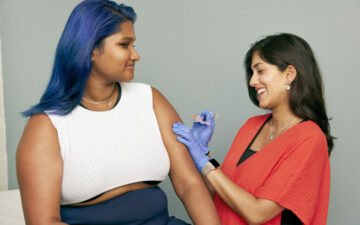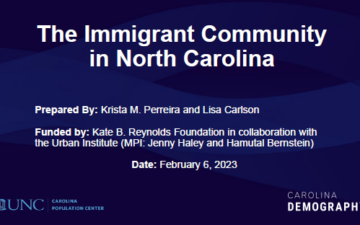Who are North Carolina’s Republican Voters? A 2024 Update

This is part of our series looking at North Carolina’s registered voters. Other stories include an in-depth look at North Carolina’s Democrat voters and an in-depth look at North Carolina’s unaffiliated voters. This is an update of our story from Sept. 2023.
As of Sept. 28, 2024, North Carolina had 7.6 million registered voters. Of these, 2,285,377 million, or 30%, were registered as a Republican.
Younger voters are the least likely to register as Republican and display a higher affinity for registering unaffiliated. Just 22% of voters ages 18-25 are registered Republican compared to 24% of 26-40 year-olds, 33% of 41-65 year-olds, and 36% of voters ages 66 and older.
As a result, older adults, especially those ages 66 and older, comprise a larger share of Republican voters than the overall electorate — 24% of all voters are aged 66+ compared to the 36% of registered Republican voters. Additionally, Republican voters ages 26-40 and 41-65 comprise a smaller share of the Republican party than the general electorate.
Reflecting this age structure, 24% of North Carolina Republican voters first registered to vote before 2000. An additional 17% of Republican voters registered in the 2000s, 29% in the 2010s, and 30% in the 2020s.
North Carolina’s registered Republicans are overwhelmingly white. Eighty-seven percent of Republican voters are white compared to 63% of the overall electorate.
White voters are significantly more likely to register Republican (41%) than other groups. Twenty-three percent of American Indian voters, 17% of Asian voters, 16% of Hispanic voters, and 3% of Black voters are registered Republican in North Carolina.
North Carolina voters born in a Southern or Midwestern state are generally the most likely to be registered as Republican. Forty-three percent of West Virginia-born voters are registered Republican, followed by South Dakota (40%), Kentucky (38%), Oklahoma (36%), Indiana (36%), and Tennessee (36%).
Just over 862,000 Republican voters — 42% of the state’s Republican voter population — were born in North Carolina. New York (93,000), Virginia (64,000), Pennsylvania (55,000), and Florida (46,000) were the next most common birthplaces outside of North Carolina.
Registered Republicans born in the South make up 72% of registered Republicans. When excluding North Carolina-born voters, this percentage falls to 42%. The second most likely place for Republican voters to be born is the Northeast at 14%, followed by the Midwest at 9%.
Across North Carolina’s 100 counties, the county share of Republican voters varies widely, reflecting county differences in composition by age, race/ethnicity, and place of birth.
Fifty-eight percent of active voters in Mitchell County were registered Republican, the highest rate statewide. Mitchell County also had the lowest rate of registered Democratic voters (9%). Over half of registered voters were registered Republican in eight other counties: Avery, Yadkin, Wilkes, Stokes, Randolph, Cherokee, Graham, and Davie.
By contrast, less than fifteen percent of voters are registered Republican in Halifax, Bertie, Northampton, Orange, Hertford, and Durham counties.
Note: Analysis presented is of the 9/28/2024 voter registration file from NC’s State Board of Elections. Analysis is limited to individuals who are active, inactive, or temporary registered voters. Voters with a reported birth age of 116 years or older were excluded from the age analysis. Thus, those born before 1909 were excluded. Likewise, voters with registration dates prior to 1930 were excluded from the registration date analysis.
Need help understanding population change and its impacts on your community or business? Carolina Demography offers demographic research tailored to your needs.
Contact us today for a free initial consultation.
Contact UsCategories: Carolina Demographics

The Center for Women’s Health Research (CWHR) at the University of North Carolina School of Medicine released the 12th edition of our North Carolina Women’s Health Report Card on May 9, 2022. This document is a progress report on the…

Dr. Krista Perreira is a health economist who studies disparities in health, education, and economic well-being. In collaboration with the Urban Institute, she recently co-led a study funded by the Kate B. Reynolds Foundation to study barriers to access to…

Our material helped the NC Local News Lab Fund better understand and then prioritize their funding to better serve existing and future grant recipients in North Carolina. The North Carolina Local News Lab Fund was established in 2017 to strengthen…
Your support is critical to our mission of measuring, understanding, and predicting population change and its impact. Donate to Carolina Demography today.